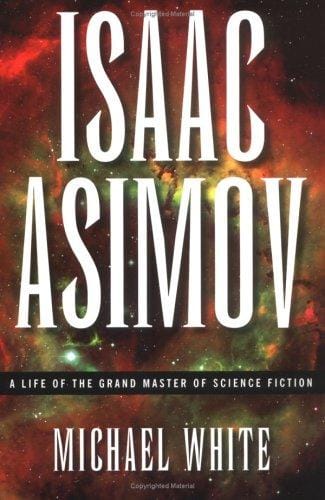Exploring Samuel R. Delany’s “Stars in My Pocket Like Grains of Sand”
A spoiler-free look at Samuel R. Delany’s brilliant space opera Stars in My Pocket Like Grains of Sand, covering themes, style, and enduring relevance.

Introduction
Samuel R. Delany’s 1984 novel Stars in My Pocket Like Grains of Sand is among the most daring works of science fiction. Long before mainstream debates about gender fluidity, ecological collapse, or data overload, Delany stretched language, politics, and desire across a galaxy of more than 6,000 worlds. The book is dense and playful, yet its emotional core—two people seeking connection in an unfathomably large universe—remains strikingly clear. This article offers a spoiler-free look at the novel’s setting, themes, distinctive style, and lasting influence.
A Galaxy-Spanning Setting
Delany imagines a future where starships “sample” space in milliseconds. Humanity has splintered into innumerable cultures and modified bodies. Some societies embrace collective parenting and fluid pronouns; others enforce rigid hierarchies. From oceanic Neptune’s Thumb to hive-world Velm, each locale feels alien because Delany treats world-building as anthropology. Readers must puzzle out customs, idioms, and etiquette without footnotes, replicating the vertigo of true interstellar travel while underscoring how environment shapes identity.
Plot Overview Without Spoilers
Rat Korga, a traumatized laborer who survives his planet’s fiery destruction, meets Marq Dyeth, an aristocratic industrial diplomat from Velm. Their bond—classified as the rare phenomenon of Exogamy—attracts attention from two rival factions, the Sygn and the Family. Political maneuvers, planetary hearings, and media spectacles ensue, yet most drama unfolds in living rooms and bathhouses, emphasizing how private intimacy can ripple across public policy. The narrative is grand in scope but defiantly personal in focus.
Key Themes
Identity and Desire
Identities in the novel are intentionally unstable. Korga’s mind was once overwritten by the General Information service, leaving him unsure where programming ends and personality begins. Marq toggles between family circles that use different pronouns for the same person depending on context. Delany suggests that selfhood is negotiated among memory, biology, and the observing eye. Love therefore becomes an experiment: can two shifting selves invent a shared vocabulary broad enough to hold them both?
Sexuality and Social Structures
Delany upends traditional portrayals of sexuality in speculative fiction. On Velm, polite conversation may include listing preferred erotic practices; public graphic novels double as sex education. The freedom in some cultures contrasts sharply with the puritanism of others, mirroring real-world disparities. Desire is shown as infrastructural, woven into law, economy, and art. That tension drives much of the conflict: whose sexual ethic will shape the next phase of interstellar society?
Technology and Communication
Although the book features faster-than-light travel and techno-organic architecture, its true subject is information. Characters monitor newsfeeds called “Context,” debate algorithmic reputation scores, and weaponize miscommunication as readily as lasers. The planetary catastrophe that starts the plot is ultimately a failure of data interpretation. Delany anticipated today’s anxieties about viral misinformation: technology collapses distance but not difference, and genuine understanding still demands patience and precision.
Delany’s Language and Style
Reading Stars in My Pocket Like Grains of Sand feels like joining a poetry workshop conducted on a starship. Sentences coil with parenthetical asides, invented slang, and baroque imagery. Exposition appears through in-world advertisements, letters, and folk songs. This density mirrors the galaxy’s cultural variety—no single dialect can capture everything. The reward is participatory storytelling: you do not merely consume the novel, you collaborate in building it.
Influence and Legacy
Though it never matched the sales of Dune or Neuromancer, Delany’s novel profoundly influenced the genre. Authors such as N.K. Jemisin, Ann Leckie, and China Miéville cite it for its queerness and sociological depth. Academic courses on gender studies and narrative theory regularly assign excerpts. Its planned yet unpublished sequel, The Splendor and Misery of Bodies, of Cities, has become legend, proof of the continuing fascination the first volume inspires.
Why the Novel Still Matters
In 2024 algorithms curate desire, climate crises threaten ecosystems, and politics fractures into rival realities—exactly the conditions Delany dramatized forty years ago. The novel offers no easy blueprint; instead it proposes radical empathy as the only technology capable of spanning cosmic distance. By portraying love as simultaneously personal and political, it urges readers to envision futures where care, not conquest, guides exploration.
Final Thoughts
Challenging, sensual, and fiercely intelligent, Stars in My Pocket Like Grains of Sand lingers long after the final page—like starlight caught between fingertips. Approach it as adventure, critique, or linguistic playground; each reading reveals new facets. If you have ever wondered how vast a single novel can be, pick up Delany’s masterwork and watch galaxies unfold word by word.



